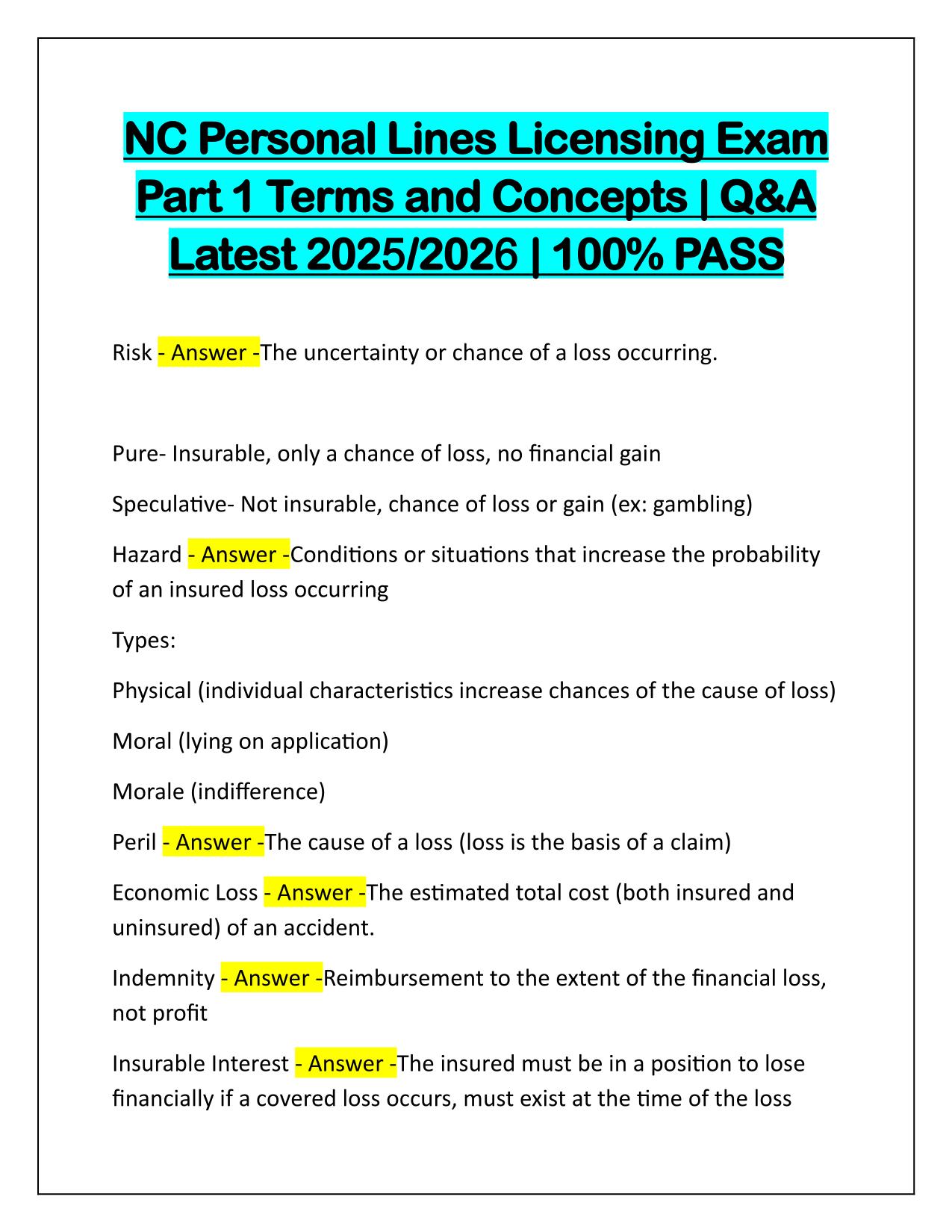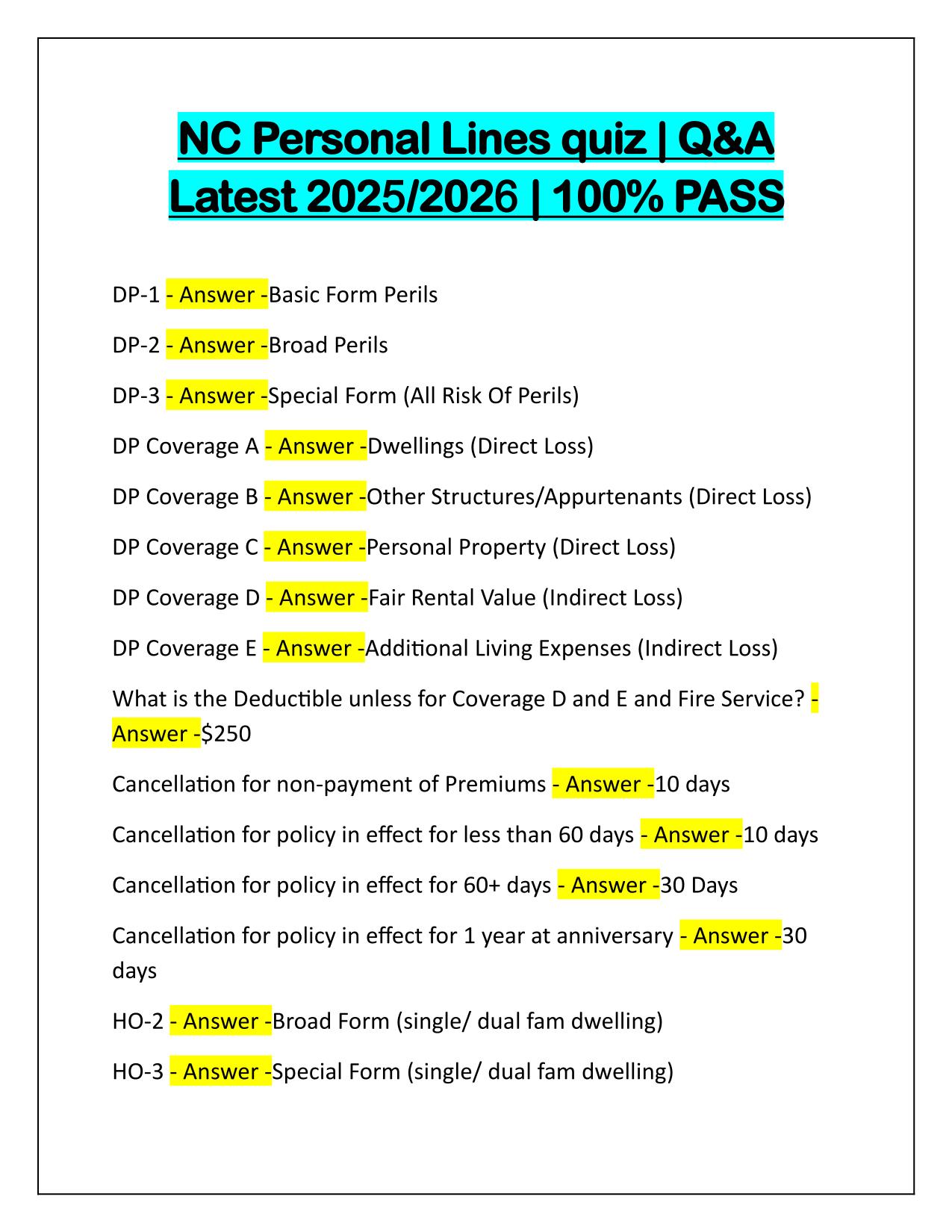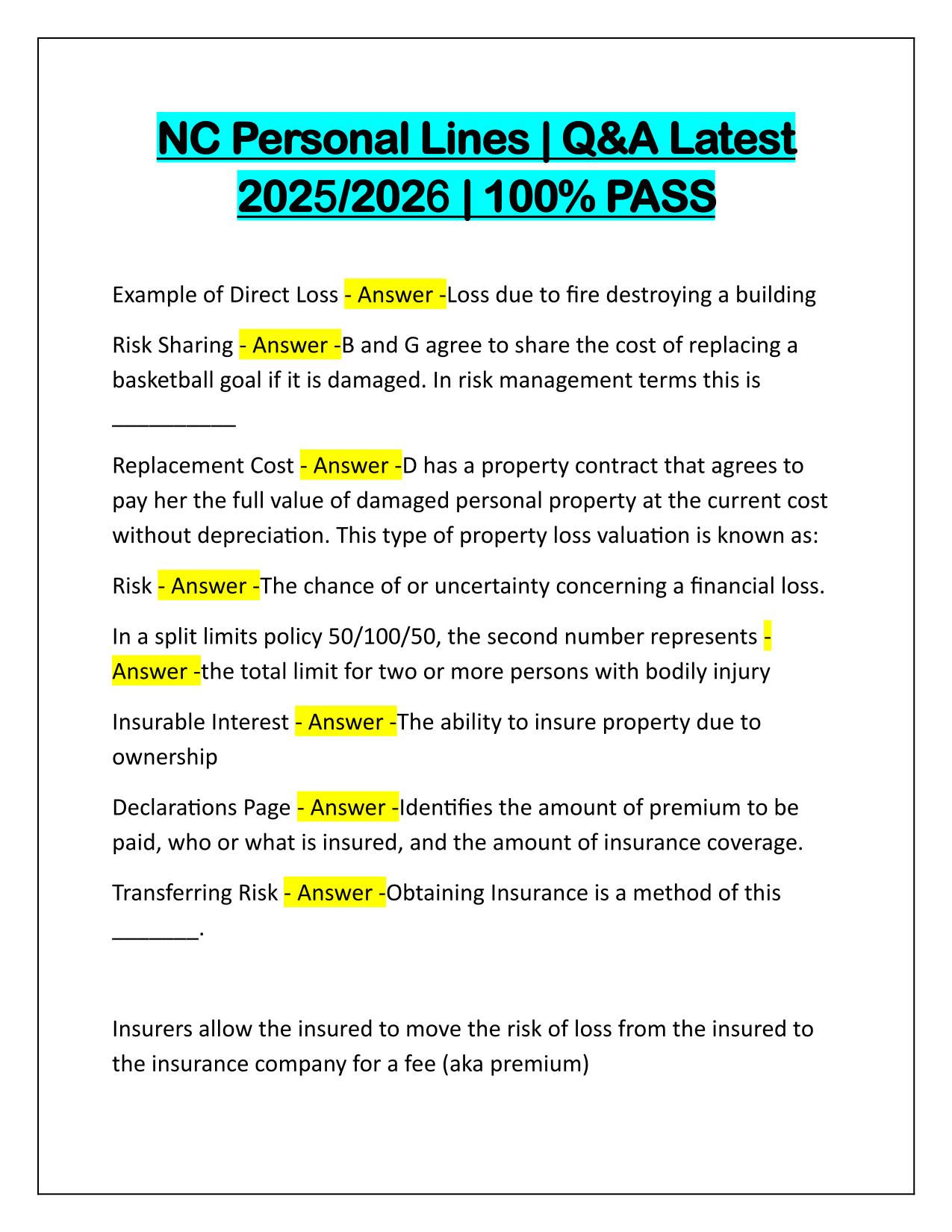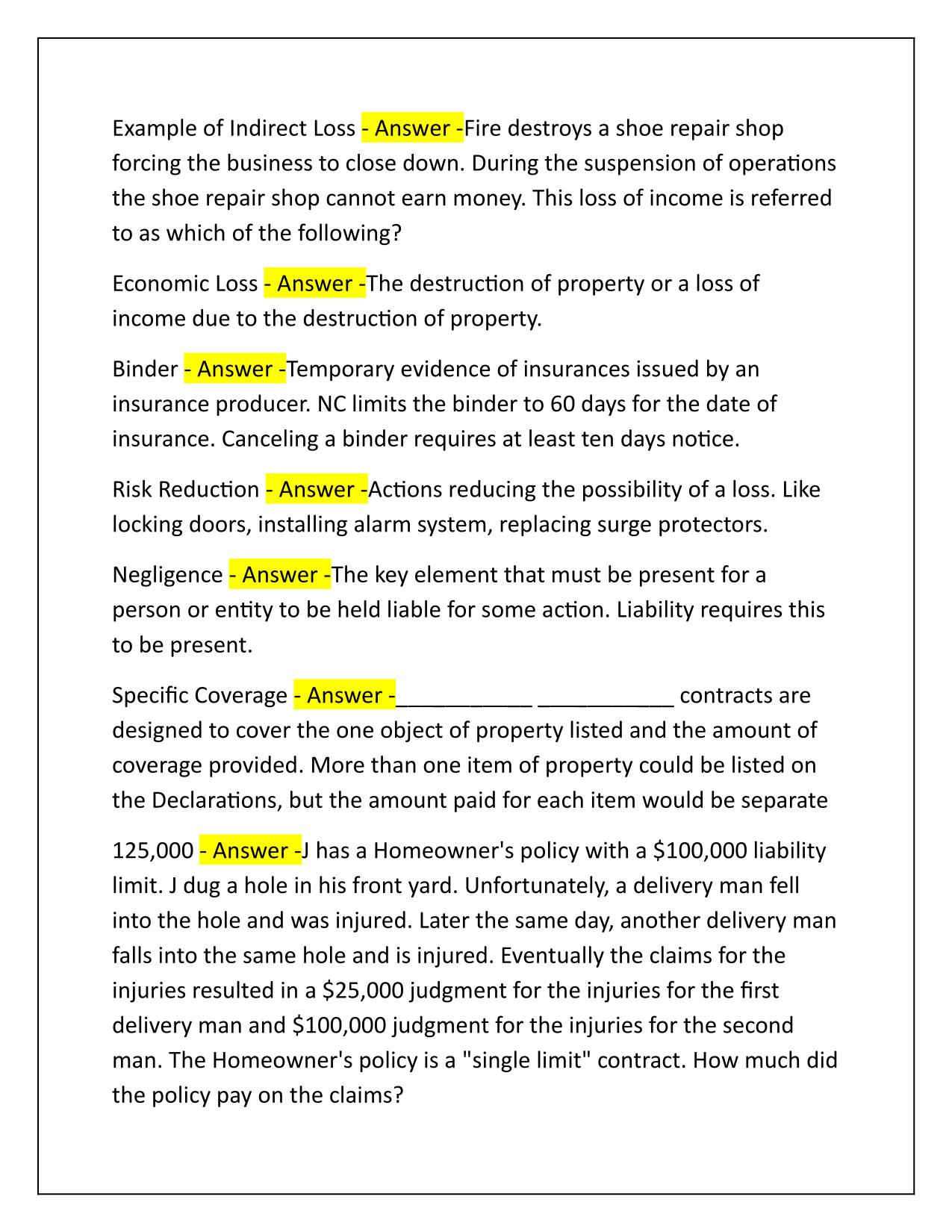NC Personal Lines Correctly Answered Latest Update
Course:
NC Personal Lines
Institution:
NC Personal Lines
NC Personal Lines Correctly Answered Latest Update
After purchase, you get:
✅ Instant PDF Download
✅ Verified answer explanations
✅ Refund if not Satisfied
✅ Prepared for 2025/2026 test cycle
Document Information
| Uploaded on: | May 1, 2025 |
| Last updated: | May 12, 2025 |
| Number of pages: | 14 |
| Written in: | 2025/2026 |
| Type: | Exam (elaborations) |
| Contains: | Questions & Answers |
| Tags: | NC Personal Lines Correctly Answered Latest Update |
Seller Information

AdelineJean
User Reviews (0)
Exam (Elaborations)
$9.00
Bundle Deal! Get all 3 docs for just $13.00
Add to Cart
100% satisfaction guarantee
Refund Upon dissatisfaction
Immediately available after purchase
Available in Both online and PDF
$9.00
| 0 sold
Discover More resources
Available in a Bundle



Package Deal for NC Personal Lines Correctly Answered Latest Update 2025-2026
Includes 3 Documents
$13.00
Content Preview
NC Personal Lines | Q&A Latest 2025/2026 | 100% PASS Example of Direct Loss - Answer -Loss due to fire destroying a building Risk Sharing - Answer -B and G agree to share the cost of replacing a basketball goal if it is damaged. In risk management terms this is __________ Replacement Cost - Answer -D has a property contract that agrees to pay her the full value of damaged personal property at the current cost without depreciation. This type of property loss valuation is known as: Risk - Answer -The chance of or uncertainty concerning a financial loss. In a split limits policy 50/100/50, the second number represents Answer -the total limit for two or more persons with bodily injury Insurable Interest - Answer -The ability to insure property due to ownership Declarations Page - Answer -Identifies the amount of premium to be paid, who or what is insured, and the amount of insurance coverage. Transferring Risk - Answer -Obtaining Insurance is a method of this _______. Insurers allow the insured to move the risk of loss from the insured to the insurance company for a fee (aka premium)

